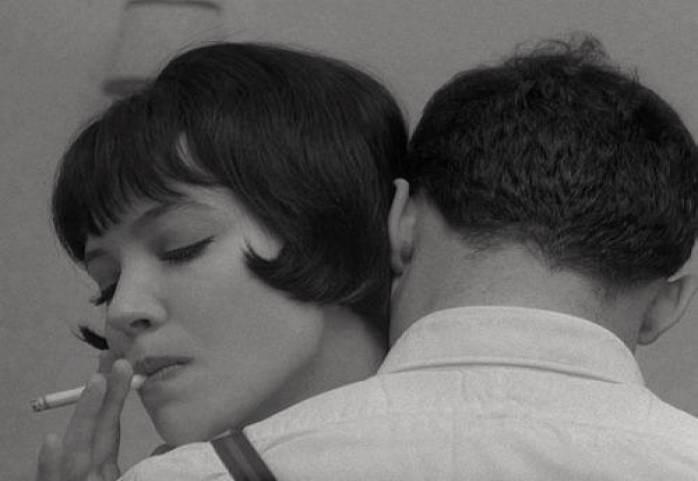Sadomasochism has always existed, also in the ancient time


Here’s What You Need To Know About Sadomasochism
Sadomasochism is nothing new.
To say the least, Sadomasochism has quite a complicated backstory, But it is worth mentioning that its history is very long, dating back hundreds.
Actually, it is not known really for sure when the first dom/sub relationship occurred. In addition to that, there’s a strong chance that early BDSM was not precisely consensual.
There are a considerable number of historical references explicitly discussing BDSM or the master/slave dynamic unless you read between the lines.
This occurred because S&M happened in the bedroom, meaning out of the public eye.
It doesn’t mean it didn’t happen just because there is a lack of primary sources.
——-
Also, the origins of S&M’s are not the most glamorous. It’s full of
characters like self-flagellating clergymen, slave owners, and sexually deviant
Nazis.
Things of this kind actually make modern BDSM seem very not very good, regardless of how much the lifestyle has evolved.
As society becomes more open-minded about sex and greater importance is placed on consent, more people are learning about and engaging in S&M.
So whether you’re dying to break out the bondage gear or don’t know what S&M is in the first place, here’s the psychology behind sadomasochism.
What is Sadomasochism?
Sadomasochism is giving or obtaining pleasure from applying or experiencing pain or humiliation. It’s usually associated with sexual gratification, but it doesn’t always have to.
Participants use it to intensify sexual pleasure. Some people might use it as a replacement for sex or find it necessary to get pleasure.
Causing pain stimulates arousal and pleasure while imitating violence can create (or convey) attachment.
In many cases, it’s the masochist who initiates sadomasochistic pursuits, guiding with subtle emotional cues.
Sadomasochists aren’t black-and-white, either although some may regard themselves as only sadistic or masochistic, many switch between roles.
History, Origins, and Early Theories
Now that we’ve gone over the basics, it’s time to dive into the history of S&M.
Unsurprisingly, this word is a combination of sadism and masochism. Even more unsurprisingly, it was a German psychiatrist named Richard von Krafft-Ebing coined them.
In Psychopathia Sexualis (1886), a summary of sexual case histories and sex crimes, Krafft-Ebing distinguished the terms from each other as they came from separate modes of sexual and erotic reasoning.
In typical 19th-century fashion, Krafft-Ebing believed sadist inclinations naturally occurred in men, and women developed masochistic ones.
Although these words emerged in the 19th century, the concept of sadomasochism itself is nothing new.
What Sadomasochism is NOT
Consensual sadomasochism is not the same as sexual aggression.
Sadomasochists solicit pain and humiliation only in the perspective of sex, affection, and/or love. Outside of that context, they condemn violence and exploitation like anyone else.
Sadomasts aren’t psychopaths; unlike antisocial personality disorder, S&M isn’t diagnosable, unless it produces severe distress or injury to others.
Some research suggests that sadistic fantasies are as common in women as men. But, these desires seem to emerge at a younger age in men than women.
Origins of Masochism
Venus in Furs (1870), written by 19th-century Austrian nobleman Leopold von Sacher-Masoch, was the inspiration for the phrase masochism.
Drawing from his own experiences, Sacher-Masoch details themes such as female dominance and what Krafft-Ebing eventually dubbed sadomasochism.
See for yourself:
Man is the one who desires, woman the one who is desired. This
is woman’s entire but decisive advantage. Through man’s passions, nature has given
man into woman’s hands, and the woman who does not know how to make him her
subject, her slave, her toy, and how to betray him with a smile in the end is
not wise.
Origins of Sadism
Krafft-Ebing got the word sadism from infamous 18th-century French nobleman, the Marquis de Sade, otherwise known as the Father of Eroticism.
De Sade is unanimously famous for his libertine sexuality and controversial writings. Notable works include:
- 120 Days of Sodom (1785)
- Justine (1791)
- Philosophy in the Bedroom (1795)
- Juliette (1799)
These quotes give a better idea of why Krafft-Ebing chose de Sade to term his new phrase:
“It is always by way of pain one arrives at pleasure.”
“In order to know virtue, we must first acquaint ourselves with vice.”
“I’ve already told you: the only way to a woman’s heart is along
the path of torment. I know none other as sure.”
Origins of Masochism
Venus in Furs (1870), written by 19th-century Austrian nobleman Leopold von Sacher-Masoch, was the inspiration for the phrase masochism.
Drawing from his own experiences, Sacher-Masoch details themes such as female dominance and what Krafft-Ebing eventually dubbed sadomasochism.
See for yourself:
Man is the one who desires, woman the one who is desired. This
is woman’s entire but decisive advantage. Through man’s passions, nature has
given man into woman’s hands, and the woman who does not know how to make him
her subject, her slave, her toy, and how to betray him with a smile in the end
is not wise.
Early Historical Accounts of Sadomasochism
People have written about getting pleasure from pain for centuries, but back then, no one really knew what to call it:
- Jean-Jacques Rousseau: In his book Confessions (1782), the Genevan philosopher discusses how, as a child, he felt sexual pleasure during beatings.
- Giovanni Pico della Mirandola: The notable Renaissance-era philosopher described a man who could not become aroused without being whipped first.
- The Kama Sutra: The world’s most famous sex manual, written during the 2nd century, talks about consensual sensual slapping.
Early doctors tried to explain this phenomenon, but of course, they weren’t always right.
After all, when you live in a sexually repressed society, it’s tough to figure out something this complicated.
Johann Heinrich Meibom (1590-1655)
German medical practitioner Johann Heinrich Meibom proposed the first theory of masochism in his 1693 Treatsie on the Use of Flogging in Medicine and Venery.
Meibom hypothesized that the kidneys stored semen, and flogging a man on his back heated it until it passed to the testicles, resulting in sexual arousal.
Today, his theory seems totally off the wall. But he wasn’t the only one who suggested ideas like this. Others also discussed how sexual arousal could diminish pain.



